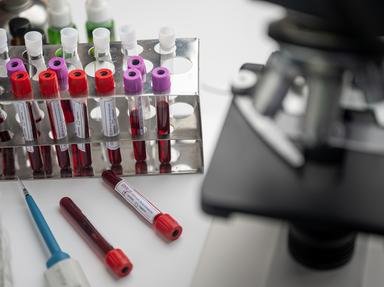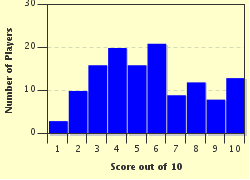Quiz Answer Key and Fun Facts
1. Fat is important as a storage molecule. It can provide protection to vital organs as well as warmth. As what form are lipids most commonly stored?
2. Fatty acids are long chains containing carbon and hydrogen and form part of several classes of lipid. These fatty acids are defined by the number of carbons in their chain, and this number is invariably an even number. This is because fatty acids are derived from 2-carbon units. These units are themselves derived from which molecule?
3. Lipids are useful as an energy source when glucose is scarce. Specifically, fatty acids undergo a process known as beta oxidation in order to generate energy. Where does beta oxidation take place in our cells?
4. One class of lipid - the phospholipid - is the main constituent of our cell membranes. Our cell membranes exist as bilayers, and phospholipids are able to form these bilayers because they possess both hydrophilic (the phosphate group) and hydrophobic (the fatty acids chains) components. What term is used to define this quality of the phospholipid?
5. Biochemical reactions and transporter proteins are involved in modifying the phospholipids in our membranes. These modifications are important in membrane structure, since different phospholipids have different shapes. Generally, a phospholipid can be described as either a cone, an inverted cone, or which other shape?
6. Another lipid called phosphatidylinositol (PI) is important in cell signalling. It can be phosphorylated to form PIP3, which acts as a docking site for several proteins which promote cell survival. While addition of phosphate is important for regulating this function, phosphate removal is also key. What name is given to a protein which removes phosphate groups?
7. The shape and character of the phospholipid bilayer helps to recruit dynamin, which binds to the membrane and contracts. What process is dynamin directly involved in?
8. Diabetes has long been thought of as a sugar-related disease, but the role of lipids are becoming more and more apparent. Which of the following is true of lipids?
9. The function of a protein in a cell is often dependent on its localisation. What name is given to the lipid chains which attach proteins such as small GTPases to the plasma membrane of the cell?
10. Estrogen research is an intriguing area and the role of this hormone in age-related disorders is becoming more and more realised. Which lipid molecule is an important precursor for the synthesis of estrogen and many other hormones?
Source: Author
doublemm
This quiz was reviewed by FunTrivia editor
WesleyCrusher before going online.
Any errors found in FunTrivia content are routinely corrected through our feedback system.

